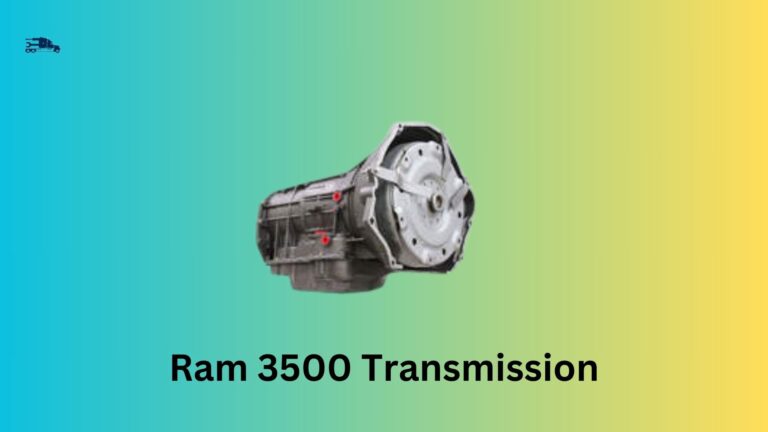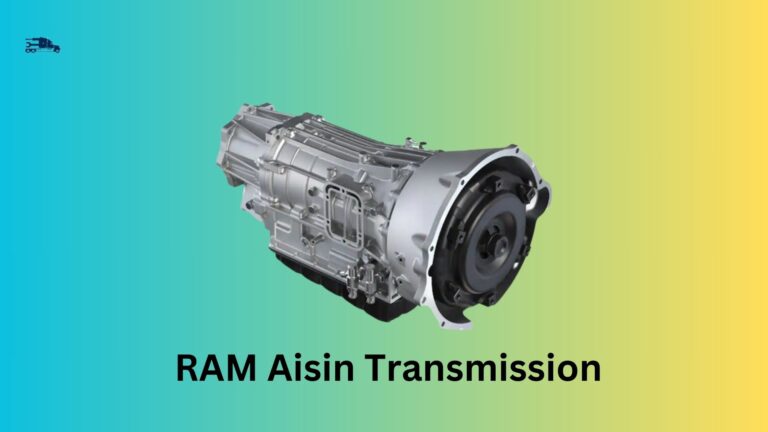Is your Dodge Ram 3500 experiencing transmission issues? Don’t worry, we’ve got you covered! In this blog post, we’ll delve into the common transmission problems that Dodge Ram 3500 owners encounter and the costs associated with fixing them. Let’s get to the bottom of these troubles and find out how to tackle them effectively!
Table of Contents
Understanding the Transmission System
The transmission system plays a crucial role in the operation of a vehicle, including the Dodge Ram 3500. Let’s dive into the details and understand why it is so important.
In simple terms, the transmission system is responsible for transferring the power generated by the engine to the wheels of the vehicle. It acts as a bridge between the engine and the wheels, allowing the driver to control the speed and torque.
Now, let’s talk about the types of transmissions found in Dodge Ram 3500 trucks. There are primarily two types: manual and automatic.
1. Manual Transmission
This type of transmission requires the driver to manually shift gears using a clutch pedal and gear stick. It provides more control and is often preferred by those who enjoy a more engaging driving experience. However, it demands more skill and effort from the driver.
2. Automatic Transmission
Unlike a manual transmission, an automatic transmission shifts gears automatically based on the vehicle’s speed and load. It eliminates the need for manual shifting, making it more convenient for everyday driving. Automatic transmissions are further categorized into traditional torque converter automatics and newer automated manual transmissions.
Common Transmission Problems in Dodge Ram 3500
When it comes to the Dodge Ram 3500, owners may encounter various transmission issues that can affect the performance and reliability of their vehicles. Let’s take a closer look at some of the most common problems faced by Dodge Ram 3500 owners:
1. Gear Shifting Issues
One of the frequent transmission problems in the Dodge Ram 3500 is difficulty in shifting gears. This may manifest as gears slipping, grinding noises, or the inability to move smoothly between gears. These issues can be caused by worn-out clutch components, hydraulic problems, or issues with the synchronizers.
2. Transmission Overheating
Transmission overheating is another issue that Dodge Ram 3500 owners may face. Excessive heat can lead to transmission fluid breakdown, resulting in poor lubrication and increased friction. Common causes of overheating include low fluid levels, a faulty cooling system, or heavy towing or hauling loads without proper cooling measures.
3. Delayed or Harsh Shifting
If you notice a delay in gear engagement or experience abrupt, harsh shifting, it could indicate a problem with the transmission system. This can be caused by issues with the transmission control module, solenoids, or internal mechanical components.
4. Clutch Problems
For Dodge Ram 3500 trucks equipped with manual transmissions, clutch problems can arise. Symptoms may include slipping or grabbing of the clutch, difficulty in shifting, or a soft or spongy clutch pedal. These problems can be caused by worn-out clutch plates, a faulty clutch master or slave cylinder, or hydraulic leaks.
5. Transmission Noise (e.g., whining, grinding)
Unusual noises coming from the transmission, such as whining or grinding sounds, should not be ignored. These noises could indicate problems with bearings, gears, or other internal components. Prompt attention to these issues can prevent further damage and costly repairs.
6. Fluid Contamination
Fluid contamination is a common problem that can affect the transmission system. Contaminants such as dirt, debris, or moisture can find their way into the transmission fluid, leading to poor lubrication, increased friction, and potential damage to internal components. Regular fluid checks and maintenance can help prevent this issue.
7. Transmission Sensor Failures
Transmission sensors are responsible for monitoring various parameters and sending signals to the vehicle’s control module. Sensor failures can result in incorrect data being transmitted, leading to shifting issues or even causing the transmission to go into fail-safe mode. Replacing faulty sensors is essential to restore proper transmission functionality.
8. Valve Body Problems
The valve body is a crucial component that controls the flow of transmission fluid and directs hydraulic pressure to different clutches and gears. Issues with the valve body, such as sticking valves or solenoids, can lead to erratic shifting, slipping gears, or even complete transmission failure. Repairs or replacement of the valve body may be necessary to resolve these problems.
9. Transmission Mount Issues
The transmission mount plays a vital role in securing the transmission to the vehicle’s chassis. Over time, the mount can wear out or become damaged, leading to excessive vibrations and movement of the transmission. This can result in misalignment, improper shift linkage, and potential damage to other components. Replacing the worn-out transmission mount is necessary to ensure proper transmission function.
10. Solenoid Malfunctions
Solenoids are electro-hydraulic valves that control the flow of fluid within the transmission. Malfunctioning solenoids can disrupt the proper operation of the transmission, causing issues such as harsh shifting, gear slippage, or failure to engage gears. Replacing faulty solenoids can help restore normal transmission function.
Repair Options and Costs for Dodge Ram 3500 Transmission Problems
When faced with transmission problems in your Dodge Ram 3500, it’s essential to explore the available repair options and understand the potential costs involved. Let’s dive into the repair options for some common transmission issues and discuss their estimated costs, considering regional variations.
Gear Shifting Issues
Repair options for gear shifting problems may include replacing worn-out clutch components, repairing hydraulic issues, or addressing synchronizer problems. The cost of these repairs can range from 1500, depending on the extent of the damage and the labor rates in your area.
Transmission Overheating
To resolve transmission overheating, repairs could involve addressing low fluid levels, fixing cooling system malfunctions, or installing additional cooling measures for heavy towing or hauling. The estimated cost for these repairs can range from 1000, depending on the specific issue and the region.
Delayed or Harsh Shifting
Repairing delayed or harsh shifting may involve replacing the transmission control module, solenoids, or internal mechanical components. The costs for these repairs can vary significantly, ranging from 2000, depending on the extent of the problem and the local labor rates.
Clutch Problems
For manual transmission-equipped Dodge Ram 3500 trucks, clutch problems may require replacing worn-out clutch plates, repairing faulty hydraulic components, or fixing leaks. The estimated cost for these repairs can range from 1500, depending on the severity of the issue and the region.
Transmission Noise (e.g., whining, grinding)
Addressing transmission noise may involve replacing bearings, gears, or other internal components. The cost of these repairs can vary widely, ranging from 2500, depending on the specific problem and the labor rates in your area.
Related articles:
47RH Transmission Problems
Aisin Seiki AS68RC Transmission Problems
2019 Ram 2500 Transmission Problems
RAM Aisin Transmission Problems
Ram 3500 Transmission Problems
Aisin Automatic Transmission Problems
2023 Ram 3500 Aisin Transmission Problems
2022 Ram 3500 Aisin Transmission Problems
2020 RAM Aisin Transmission Problems
2021 Ram Aisin Transmission Problems
2019 Ram 3500 Aisin Transmission Problems
Preventive Maintenance Tips for a Healthy Dodge Ram 3500 Transmission
Maintaining a healthy transmission system is essential for the optimal performance and longevity of your Dodge Ram 3500. By following a few preventive maintenance tips, you can help prevent transmission problems and save on costly repairs in the long run. Let’s explore some practical advice to keep your transmission in top shape.
Regular Fluid Checks
Regularly checking the transmission fluid level and quality is crucial. Follow the manufacturer’s recommendations for liquid type and intervals for checking and replacing the fluid. Low fluid levels or contaminated fluid can lead to poor lubrication and increased friction, potentially causing transmission issues.
Proper Driving Habits
Adopting good driving habits can contribute to a healthier transmission. Avoid sudden acceleration, harsh braking, and excessive towing or hauling beyond the vehicle’s capacity. These actions can put unnecessary stress on the transmission and lead to accelerated wear and tear.
Scheduled Maintenance
Follow the recommended maintenance schedule outlined in your Dodge Ram 3500 owner’s manual. This includes regular inspections, fluid changes, filter replacements, and other maintenance tasks specific to the transmission system. Adhering to these schedules ensures that potential issues are identified early and addressed promptly.
Cooling System Maintenance
A properly functioning cooling system is vital to prevent transmission overheating. Regularly inspect the radiator, coolant levels, and hoses for any signs of leaks or damage. Ensure that the transmission cooler is clean and free from debris to maintain optimal cooling efficiency.
Avoid Excessive Idling
Extended periods of idling can cause the transmission to overheat. If you find yourself in a situation where your vehicle is idling for an extended period, consider shifting into neutral or turning off the engine to reduce unnecessary strain on the transmission.
Conclusion
Understanding the common transmission problems and associated costs for your Dodge Ram 3500 is crucial for maintaining a reliable and efficient vehicle. By being aware of potential issues and taking proactive measures through regular maintenance and preventive care, you can keep your transmission running smoothly and avoid unnecessary expenses down the road.



